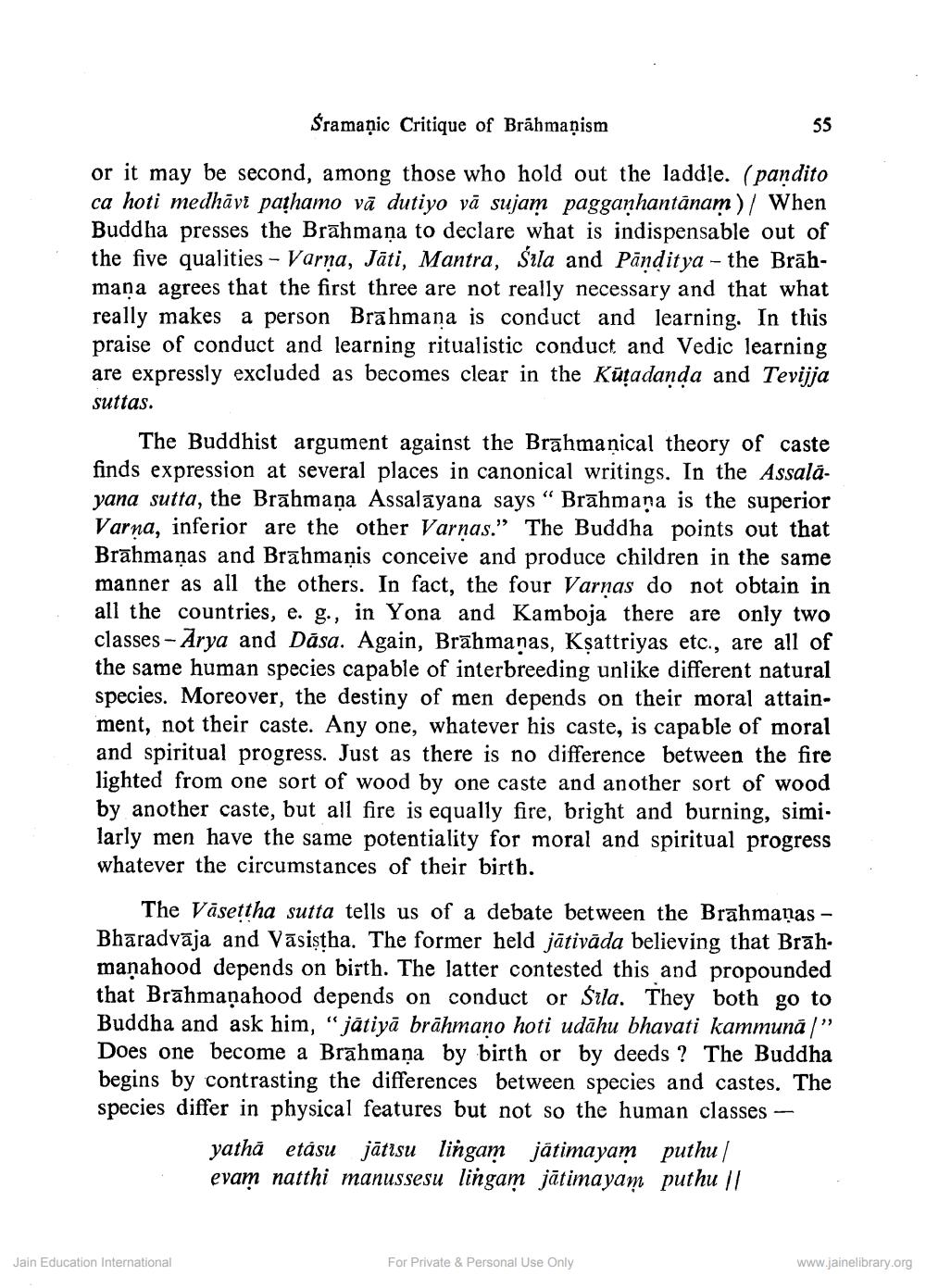________________
Śramaņic Critique of Brāhmaṇism
or it may be second, among those who hold out the laddle. (pandito ca hoti medhāvi paghamo vā dutiyo vā sujam pagganhantānam)/ When Buddha presses the Brāhmaṇa to declare what is indispensable out of the five qualities - Varņa, Jāti, Mantra, Sila and Panditya - the Brāhmana agrees that the first three are not really necessary and that what really makes a person Brāhmana is conduct and learning. In this praise of conduct and learning ritualistic conduct and Vedic learning are expressly excluded as becomes clear in the Küțadanda and Tevijja suttas.
The Buddhist argument against the Brahmanical theory of caste finds expression at several places in canonical writings. In the Assalayana sutta, the Brāhmaṇa Assalāyana says “Brāhmana is the superior Varna, inferior are the other Varnas." The Buddha points out that Brāhmaṇas and Brāhmaṇis conceive and produce children in the same manner as all the others. In fact, the four Varnas do not obtain in all the countries, e. g., in Yona and Kamboja there are only two classes - Arya and Dāsa. Again, Brāhmanas, Kșattriyas etc., are all of the same human species capable of interbreeding unlike different natural species. Moreover, the destiny of men depends on their moral attainment, not their caste. Any one, whatever his caste, is capable of moral and spiritual progress. Just as there is no difference between the fire lighted from one sort of wood by one caste and another sort of wood by another caste, but all fire is equally fire, bright and burning, similarly men have the same potentiality for moral and spiritual progress whatever the circumstances of their birth.
The Vāsettha sutta tells us of a debate between the Brahmaņas - Bharadvāja and Vasistha. The former held jātivāda believing that Brahmanahood depends on birth. The latter contested this and propounded that Brāhmanahood depends on conductor Śrla. They both go to Buddha and ask him, "jātiyā brāhmano hoti udāhu bhavati kammună / Does one become a Brahmana by birth or by deeds? The Buddha begins by contrasting the differences between species and castes. The species differ in physical features but not so the human classes –
yathā etásu jātisu lingam jātimayam puthu / evam natthi manussesu lingam jātimayam puthu ||
Jain Education International
For Private & Personal Use Only
www.jainelibrary.org




